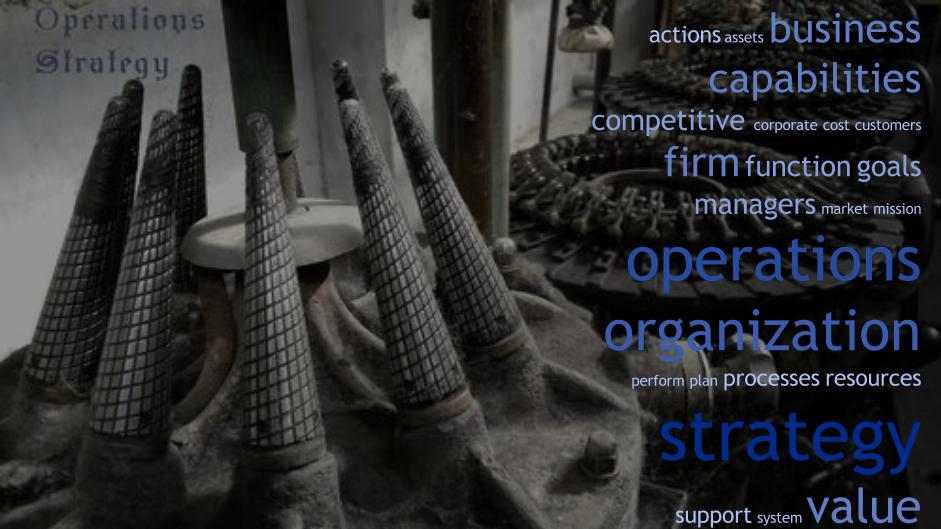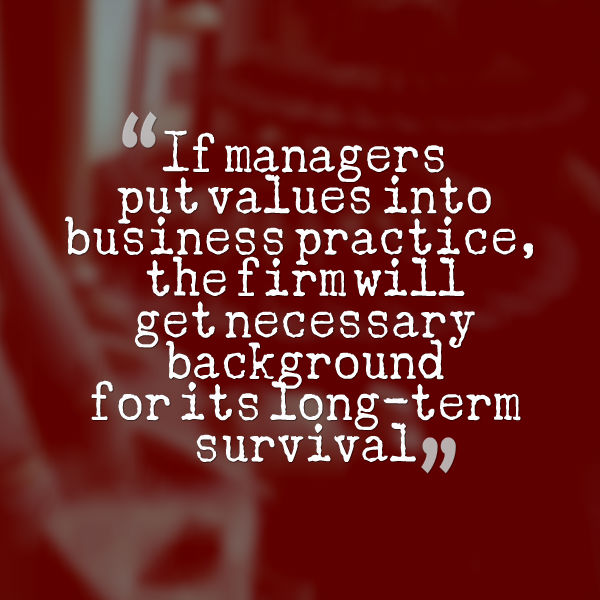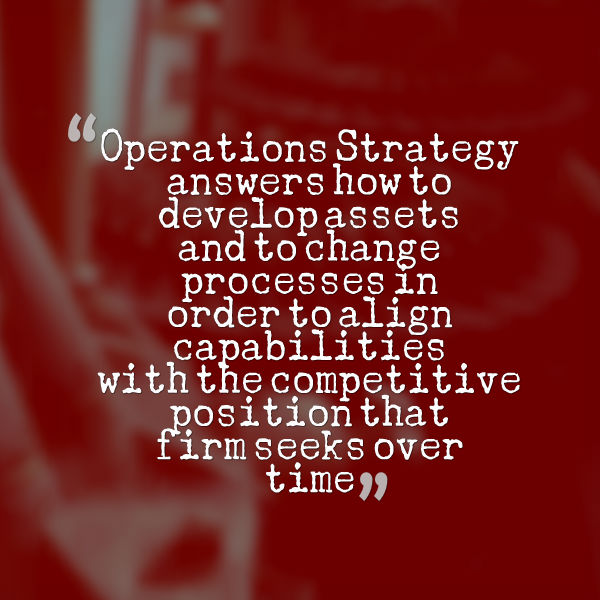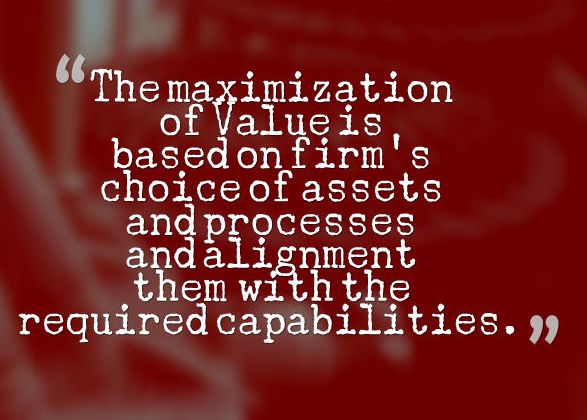23:37 Operations Strategy |
|
Operations StrategyWhy we might be interested in Operations StrategyOperations Strategy is one of the most important categories for organizations (firms), which apply Operations Management, aimed at cost-effective adaptation under demand changes. Individual efforts to influence the cost, quality and availability and to reach organization's goals are usually wasted. To start determining Operations Strategy in an organization properly we must know the meaning of a strategy and main features of operations strategy. We have to understand how Operations Strategy links with organizational value and competitive strategy and overall business strategy. What questions should be asked and considered by firm's managers and experts.
Strategy simply means a specific plan of action to reach a particular objective. The essential motion of strategy is captured in the distinction between ends and means. The strategy clearly articulates what to do. It denotes the ends, which are the goals. And the strategy explains how to get this done, indicating the means. A strategy is a plan to reach a specific goal.
There are corporate, business and function levels of strategy (http://cws.cengage.co.uk/barnes/students/sample_ch/ch2.pdf). Each function in an organization (firm) has its own strategy. Functional strategy details how a functional area will contribute to the achievement of organization's goals and objectives. Given that we are interested in organizations or firms, managers must specify the goal of the organization's or firm's strategy. They often say that their goal is to provide superior and sustainable performance. It seems reasonable to measure organizational performance in terms of the organizational value.
Organizational ValueOrganizational Values are a bedrock of an organization, on which the organization is built. They describe individual and corporate behaviors that will get from where the organization is now to where it should be according with its mission and vision (PLN9, 2014). Well, let's recall what Mission is. Simply we may keep in mind that mission tells an organization where it is going. Therefore strategy may be perceived as action plan to achive mission Organizational Values have been known to partially define the organizational culture and to serve as a bonding mechanism between workers. But recently, values have served as a critical component of the organization’s perspective regarding strategic direction, mission determination and visioning (Olli-Pekka Viinamäki, 2012). If managers put values into business practice, the firm will get necessary background for its long-term survival.
Organizations thrive when they create more value for their stakeholders, e.g. owners, employees, customers, communities, and others, than their competitors do. Ultimately, the value of organization has been creating since that time, as the organization started creating the value for its customers. At the same time, the firm's costs of providing this activity have been decreasing the value of organization.
Operations Strategy: what is it and what is it linked with?Here is a list of how Operations Strategy was defined. In the context of the functional structure of organization it was defined as follows
Slack et al. (2004) gave another concise interpretation
More detailed definition is the following
Go ahead to the next definition
Thus, there is a high degree of interdependence between operations resources and the business strategy. Managers have to analyse such characteristics, as capacity, location, processes, technology, cost and timing, as well as supply chain when they create or modify strategies. The term operations strategy relates to both competitive strategy and operations. All these strategies enter into overall business strategy. The strategic alignment principle gives explanations how operations and competitive strategy are related each other. For long time strategists have been proclaiming that the appropriateness of a strategy can be identified in the context of the fit, match, or alignment of organizational structure and resources with environmental opportunities. So Operations Strategy should give intelligable answer how to develop assets and how to configure and adjust processes so that the resulting capabilities are aligned with the competitive position that organization (firm) seeks over time.
Don't forget that the allocation of resources leads to conflicts within the organization. Think about conflicts between the operations and the group of functions such as marketing, budgeting and financial accounting, human resource management. Value Maximization PrincipleThe quasi-mathematical equation of VCAP framework is (Jan A. Van Mieghem and Gad Allon, 2014) Value = Capabilities × (Assets + Processes) To support changes there is a need to understand and assess organization's (business) capabilities. Capabilities are organization's ability to manage its resources to accomplish tasks. It's capacity to successfully perform a business activitiy. There is also the concept of Dynamic Capabilities in literature (Teece, 1997). This is defined as ability to manage competences to address rapidly changing environments. This is ability to achieve new forms of competitive advantage given situation and market position. The maximization of Value is based on firm's choice of assets and processes and alignment them with the required capabilities.
The VCAP framework assumes questions (Jan A. Van Mieghem and Gad Allon, 2014).
Answering these questions, the organization may obtain operating system, successfully adapted to market situation. Such operating system has assets and processes, which are complied with its capabilities to propose the customer value specified by the competitive strategy. What the next?To answer mentioned questions and to make right strategic decisions managers face with a lot of data about market, customers, supply chain, and operating system. You may explore the collection of cases on "big data" analytics for these domains in Applied Business Analytics Casebook, The: Applications in Supply Chain Management, Operations Management, and Operations Research References
|
|
|
Главная » 2015 Ноябрь 22 » Operations Strategy




